How to Prepare for a 5K (From the First Week)
Want to know how to prepare for a 5K race? Or ready to hit a PR in the 5K? Check out our exclusive training tips to hit your goals!
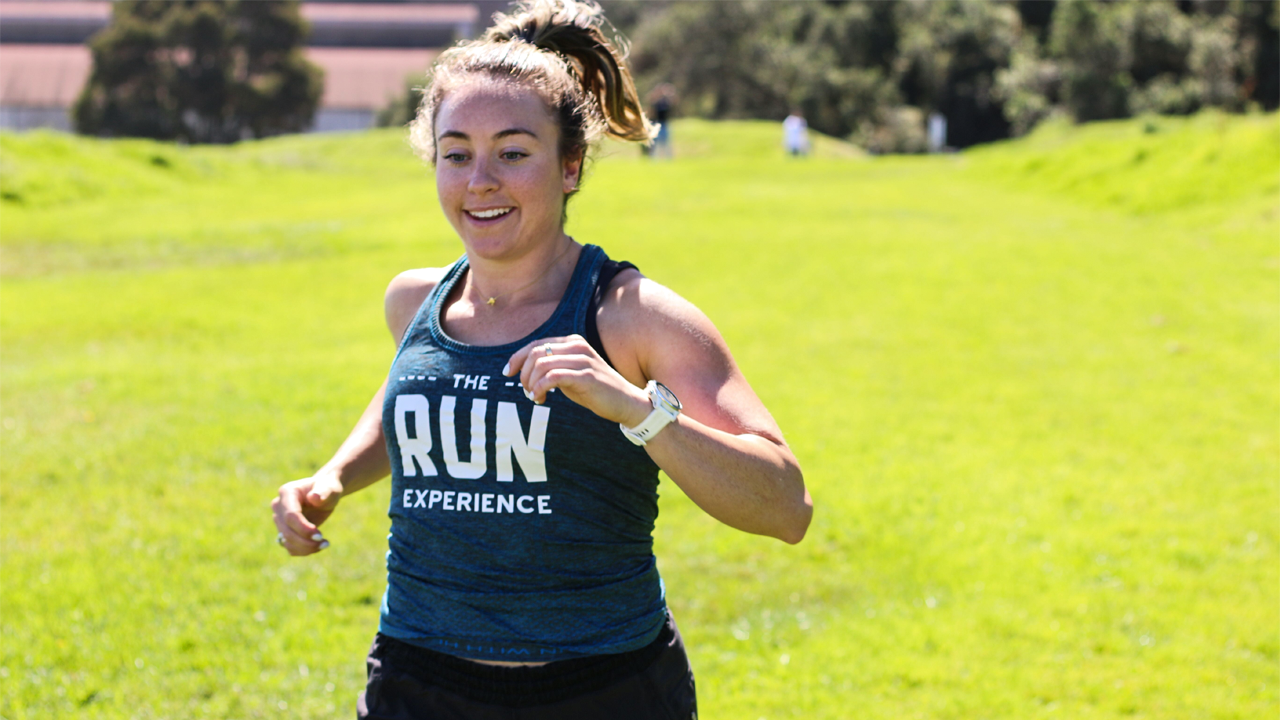
No matter your fitness level, you can learn how to prepare for a 5k race (3.1 miles). You may be coming back from a running layoff, or you’re a new runner with a fitness goal. Maybe you just want to organize your training a bit better and hit a PR. Regardless of your motivation, you can do this!
We’ll show you how to train for a 5k starting with the most important piece of gear all the way to some considerations on race day. We’ll explain how to avoid injuries, integrate mobility work, and set yourself up for successful recovery. Your first week of training will be fully explained in this article so you can hit the ground running.
See you at the starting line!
How to Prepare for a 5K
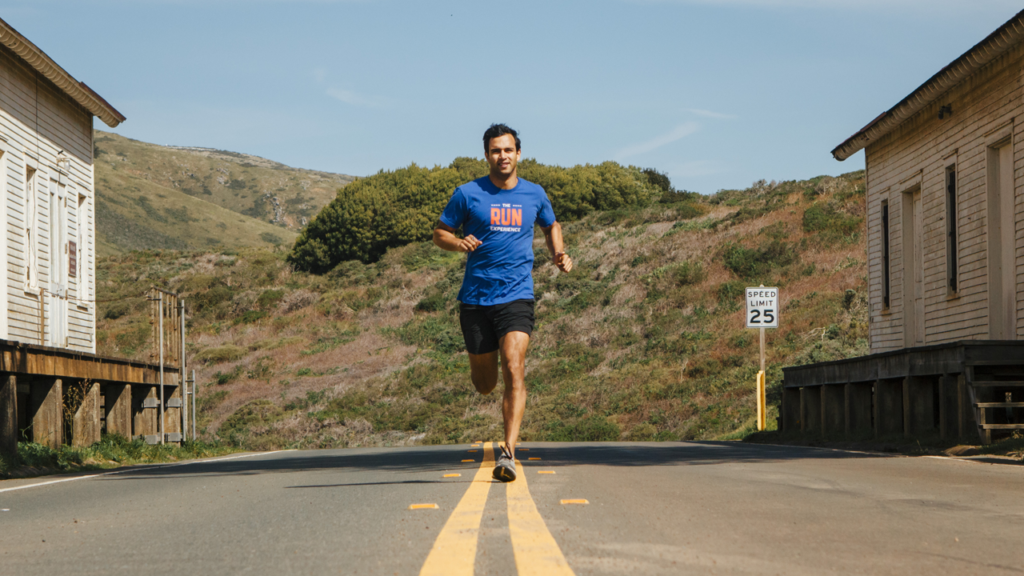
If the first week rocks your running work, then don’t forget that the full 5k training program is available in our app. For six weeks, each workout is fully programmed and organized for you. There will be speed work, running drills, strength training, and restorative work to get complete training without injury. Not only that, but our running coaches are also in the app to answer any questions you may have. Our running community is training right alongside you in the app, too. Download it here to join us!
Now, let’s dive into some of those essential components of how to train for a 5k. Lace up your running shoes and here we go!
1. Always Warm Up Before You Run
Prioritize giving yourself enough time to complete a warm-up before every workout. This gives you a leg up on injury prevention and benefits your recovery. By performing a warm-up, you heat up your core temperature and prepare your joints and muscles for movement. You can also use a warm up to grease the groove of good running mechanics. For example, performing a few burpees will wake up your hip flexors and core, two areas that are responsible for a lot of your movement while running.
The focus of your training isn’t just the workout, but also how you prepare for it. For a more detailed explanation, we’ve got a great article which tells you all you need to know about warming up.
If video is more your style, check out this one with Coach Holly. This routine should be a priority for you on race day, so spend some time working through it during your training schedule so you’re familiar with it on the big day.
2. Perform Form Drills To Become A More Efficient Runner
Running with an inefficient form is like cooking without the right ingredients.
Spend some time evaluating and fine-tuning your running form and mechanics. This helps reduce the risk of injury, run faster, and helps you move more efficiently as a runner. Think of it like running-specific cross-training.
To start, ask yourself these questions:
Are my feet underneath my hips? Does my torso rotate? Is my spine straight or rounded?
Each of the drills we’re about to explain will tackle some elements of those questions. You’ll get just a brief overview here, but for the full explanation you can either read our blog post about these favorite running form drills, or you can just click on the video below:
- Heel-toe rocking: Learn to keep your hips forward while running.
- Hopping drill: Stay light on your feet.
- High Knees: Practice a quick cadence with fast feet.
- Butt Kick: Engage your glutes and hamstrings
- Inseam Pull: Combine the previous two drills to practice an optimal stride
- Stable arm drill: Prevent excessive rotation while running
- Carioca: Move your spine through a great range of motion
You can build these drills into your dynamic warm up or sprinkle them throughout your next run.
3. Add Cadence Drills To Your Training Plan
Cadence refers to the number of times your feet hit the ground in a minute. Increasing your cadence means that you decrease the amount of time your feet are on the ground with each step. This helps reduce the impact of running on your body as well as encourages an efficient stride. Additionally, it helps maintain your running form as you keep your feet closer to under your body and avoid landing with your foot too far in front of you.
To learn more and improve your cadence, check out this video below and try the running workout yourself!
There are several free metronome apps available on your smartphone. Find one that works for you and let’s get running.
To find your baseline cadence, run in place and count the number of steps you take in one minute.
Got your number? Great! Set your metronome to that number (ex: baseline= 175; set the metronome to 175 beats per minute). You will be repeating short run intervals, which can be done on a track for 600m (1.5 laps), or on the road for about 30 seconds.
Start your workout:
- 1st Interval = Baseline (test result)
- 2nd Interval = Increase by 5 steps per minute (1st was 175, 2nd = 180 BPM)
- 3rd Interval = Increase again by 3 steps per minute (175, 180, 183 BPM)
4. Make Sure To Cool Down After A Run
Resist the urge to jump in the shower or car as soon as you’re done running. Start your cool down by walking to first get your heart rate down. Afterward, follow along with Coach Kirk in the video below to stretch out and encourage blood flow to areas that tend to get tight while running. You can also read a breakdown of this cool down routine here.
- Enjoy that cool down walk to start. Try untying your shoes so your feet can breathe.
- Hip circles work your hip flexors and prevent tightness. Flowing to a hamstring stretch will loosen up the back of your leg.
- Your ankles will get a good stretch by working your knee ahead of your foot, or by using the classic downward dog yoga position.
- Use a staggered squat to deeply flex your toes and stretch the fascia in the bottom of your foot.
5. Mobilize Your Muscles And Tissues
Post cool down is the perfect time to work in some mobility and tissue massage. Your joints and muscles can get stiff with the repetitive movements and the stress of a workout. By using either a foam roller, a ball, and/or a PVC pipe, you can restore full range of motion to your tissues and avoid excessive soreness. All in all, this is a great way to set yourself up for your next workout!
Follow along with Coach Kirk with three great lower leg restoration and injury prevention exercises.
- To massage your lower leg muscles, grab a PVC pipe, a broomstick, or a roller such as a Tiger Tail. Roll out your calves down to your ankles just like you would with dough and a rolling pin.
- Using a golf ball and/or lacrosse ball, sandwich the tissues surrounding your shins to release tightness that can build up over a run.
- Increase the range of motion in your ankle by sitting back in a kneeling position and pulling up on the knee while pressing your ankle into the ground.
Feel free to use these mobilizations on rest days, too! And if you’re interested in learning more of the science behind foam rolling, check out this explanation from Coach Nate.
More Resources on Preparing for a 5K
Just before we jump into your first week of training, let me mention that we have other goodies on the blog to help you prep for your 5k training.
- Running coach Mike Olzinksi has some great tips from the perspective of a very experienced runner in his article “5k Training Plan: Tips From Seasoned Vet Mike Olzinski.” Check out his tips on how to structure your training and goal setting.
- If you want more tips about things like gear, hydration, and staying motivated, jump to this article, “Couch to 5k Plan: Prepare for Your First Race with These Tips,” to round out your knowledge.
How to Prepare for a 5K: Week 1
Here’s your first week with everything put together:
Day 1: Breath & Mobility
- Yoga sequence:
- Downward Dog to Upward Dog, repeat 5-10 times
- 3 Legged Dog to Long Lung, repeat 3-5 times
- Pigeon Pose, 1-20 breaths per side
- Forward Bend, hold for 5-10 breaths
Day 2: Run Drills
- Warm Up:
- 5 minutes of easy running
- 10 hip circles per leg
- 10 arm circles, forward and backward
- Main Set:
- 10-20 minute run at moderate pace
- Every minute, breathe only through your nose for 5-10 breaths. Breathe normally for the rest of the minute.
- Cooldown & Mobility:
- 3 minutes of easy running
- Foam roll the quads for 2-3 minutes per leg
Day 3: Strength, Power, & Agility
- Warm Up:
- (Optional) 5-15 minutes of easy running
- 60 seconds Jumping Jacks
- 10 Boot Strappers
- 20 Plank Shifts
- 20 Leg Swings per side
- 15 Arm Circles forward and backward
- Main Set:
- 10-8-6-4-2 ladders: Complete one ladder of each exercise grouping before moving on to the next
- Alternating Lunges, Mountain Climbers and Bicycles
- Push Ups, Burpee Broad Jumps, and Sit Ups
- Single Leg Hops and Glute Bridge March
- Mobility:
- Foam roll the T-spine (upper back) for 2 minutes
- Foam roll lats for 2 minutes per side
Day 4: Quality Run
- Warm Up:
- 5-15 minutes of easy running
- 10 hip circles per leg
- 10 arm circles, forward and backward
- Main Set:
- 12 minute run
- Alternate 30 seconds of running with 30 seconds of walking.
- Advanced runners can alternate running for 30 seconds with 30 seconds of slower jogging.
- Cooldown & Mobility:
- 5 minutes of easy running
- Foam roll the calves for 2-3 minutes per leg
Day 5: Balance, Stability, & Core
- Warm Up
- (Optional) 10-30 minutes of easy running
- 30 seconds Arm Circles, forward
- 30 seconds Arm Circles, backward
- 30 seconds Arm Swings, front to back
- 20 Leg Swings per side
- 10 Hip Circles per side, clockwise, then counterclockwise
- 10 Hamstring Flosses, each leg
- Main Set:
- 3 x 8 reps:
- Quadraped per side
- Single Leg Deadlifts per side
- Rest 60 seconds
- 4 minute Tabata: 8 x 20sec work w/10 sec rest, each exercise
- Super Plank
- Reverse Plank
- 3 x 8 reps:
- Weight Shift Pushups
- Cossack Squats per side
- Rest 60 seconds
- 1-minute Squat Hold
- Belly Breathing for 20 breaths
- Mobility:
- Roll out each foot for 2 minutes
- Foam roll each shin for 2 minutes
Day 6: Long Run
- Warm Up:
- 5 minutes of easy running
- 10 hip circles per leg
- 10 arm circles, forward and backward
- Main Set:
- 2.5-5 mile run minute run
- Every 3 minutes, stop running and perform 10 air squats
- Advanced option instead of air squats:
- Start: Easy for 1 mile
- Pick-up: Run 2 minutes at 5k Race Pace, recover 2 minutes
- Repeat 2 more times
- Finish: Easy for the remainder of the distance
- Cooldown & Mobility:
- 5 minutes of easy running
- Foam roll the glutes for 2-3 minutes per side
- Foam roll the hamstrings for 2-3 minutes per leg
Day 7: Fun Run Or Cross Train
- Optional Run:
- 2-4 miles if you’re body is well recovered
- Or, choose to relax outside, play with your dogs or kids, or do chores around the house
With this first week of training, you’ve got a clear picture of just how we structure our training. Slow running isn’t a warm up for faster running, and no workout is complete until you’ve gotten in your mobility. Those are the golden rules that you’ll see in the rest of our 5k Training Program, in addition to strength training and form drills.
Make sure to download the app to get access to the full videos for this first week of how to train for a 5k as well as the rest of the program!
Prepare for 5K Race Morning
Race day is something special. You’ve put in the training and now it’s time to run your 3.1 mile race. We always recommend getting to the race location nice and early so you have plenty of time to deal with race day logistics. Depending on the size and location of the race, parking and walking to the start line could take a good 20-30 minutes. Study the layout of the race and form a plan of action the night before so that getting to the starting line isn’t the most stressful part of your race.
Once at the race site, be sure to perform a proper warm up, just like you’ve practiced. Don’t let the first mile of your 5K be your warm up; the shorter the workout or run, the longer the warm up should be. If you’re looking for few extra tips about your race day warm up, Coach Holly has you covered:
- Perform a shakeout jog up to 10 minutes to get your core temperature warm, focusing on breathing and the proper running mechanics you’ve practiced in your dills.
- Follow up that run with a dynamic warm-up, choosing up to 3 movements that will sufficiently warm up the joints and tissues. Arm circles, leg swings, and lunges are solid choices.
- Finish with some strides to primer the performance of your hips, lungs, and chest.
With a solid warm-up, you’re ready for a great day. Let this race be an expression of all the work you’ve put in on your form, your cadence, and your recovery!
5K Training Tips
Are you looking to up your 5K game? Whether you’re a beginner runner or an experienced competitor, having the right training plan can help you reach your goals.
To make the most out of your 5K training, it’s important to understand the basics and how to apply them to your routine. Here are a few 5K training tips that’ll help you finish your next 5K with a PB under your belt.
1. Get Those Miles In
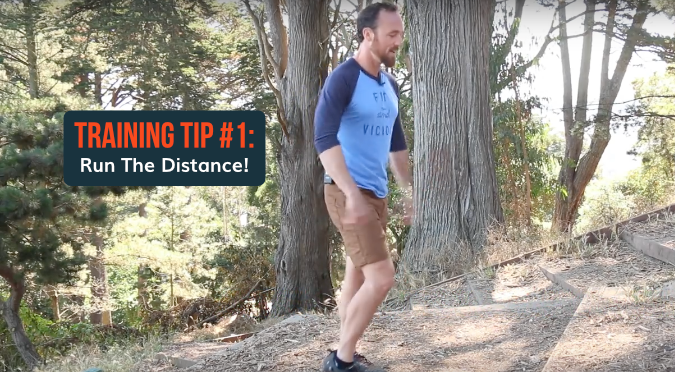
You cannot achieve success on race day without simply logging the miles in preparation!
Even though the race will be a distance of 3.1 miles, many of your training runs should fall somewhere between 3 and 5 miles.
Being able to maintain good form for a longer distance will make your efficiency and stamina for the shorter race distance that much better.
Here’s a couple tricks you can use to reset your posture mid-run:
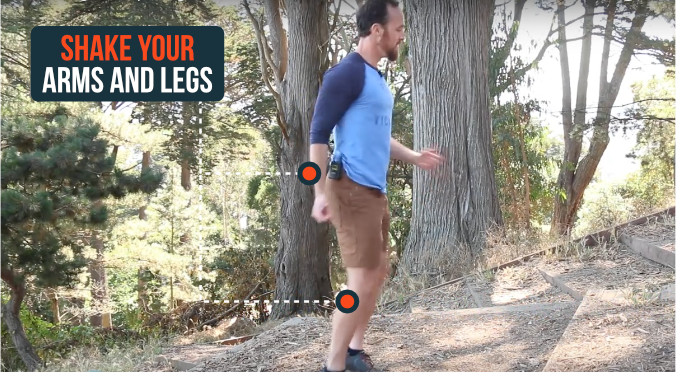
- 1) Every 5-10 minutes: Shake out your arms and legs. After a few moments, reset those shoulders and that arm swing and continue on!
- 2) Every 5-10 minutes: Stop and do 8-10 squats. After completing, reset the hips and settle into your newly re-energized stride!
- 3) You can alternate between these two movements until the run is over.
2. Practice Running Fast
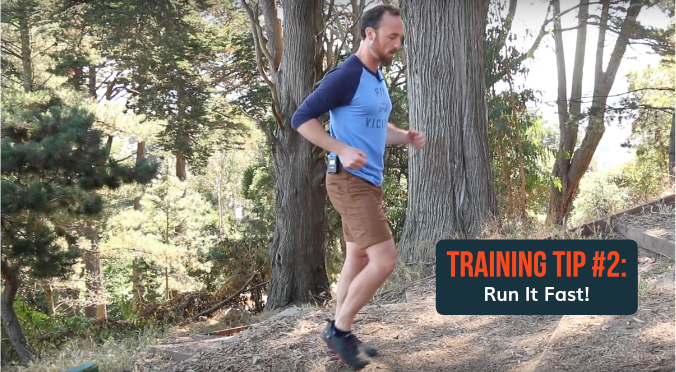
The 5K race is often used as a vehicle for improving speed at other distances. For someone running a 10K or Half Marathon down the road, perhaps the most valuable of our 5K training tips is to work regularly on improving your speed!
And remember, your speed is only as good as your ability to maintain it during the race.
Here’s a workout you can incorporate once a week:
- 1) Find a “runnable” hill (5-8% gradient). It should not be so steep that you have to hike to get up it.
- 2) Run up the hill with a hard effort (it should feel similar to a sprint) for 45-60 seconds.
- 3) Recover by walking or jogging down the hill before repeating.
- 4) Repeat for 5 rounds.
- 5) The goal is to be able to complete up to 10 rounds after a couple months of training.
And here are a few additional 5K Training Tips to use to make those hill sprints less painful:
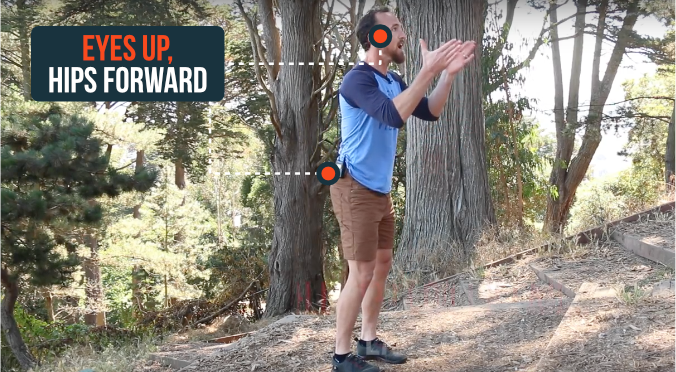
- 1) Keep your eyes up! Don’t focus on the ground.
- 2) Keep your hips driving forward as you run INTO the hill!
- 3) Make a conscious effort to maintain your arm swing! Like putting more gas into the car, the arm swing can serve as extra fuel to get you up that hill!
3. Learn To Run With Less Effort
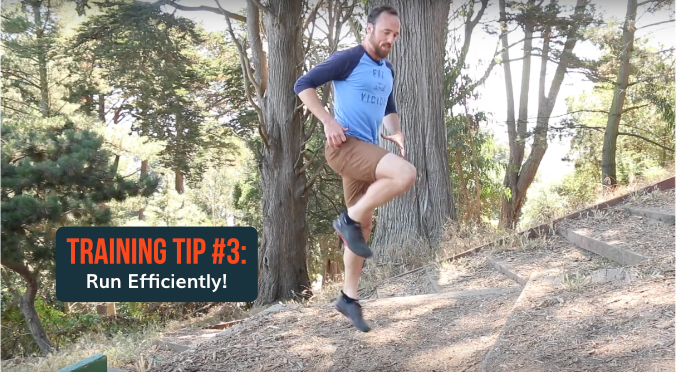
The 5K distance is a perfect blend of demanding both distance and speed equally.
To find success in the 5K you must learn to expend less energy. You can do this by accessing more power in each step as well as improving the mechanics of your footwork and upper body posture as you run.
To fine-tune this, try adding in 1-2 running drills before 1-2 runs per week.
Here are two of our favorites:
1) The High Skip
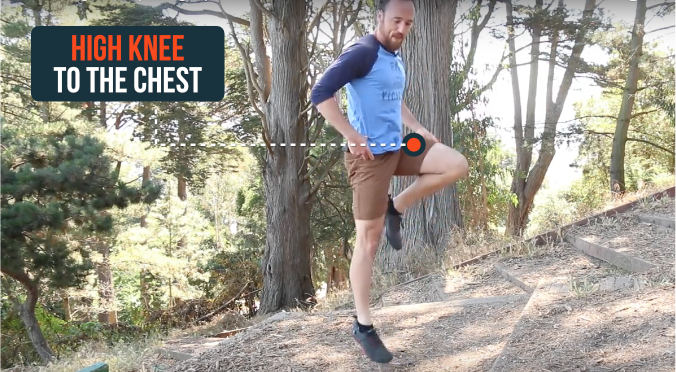
The high skip teaches you how to drive the most power out of your foot, each time it comes off the ground.
Exaggerating the driving of the knee to the chest will help you find a more efficient pulling position in your stride.
The explosiveness of this movement will make your distance running more economical around miles 2 and 3.
Complete 2-3 rounds of high skips for 10-30 meters before heading out on your run.
2) Carioca
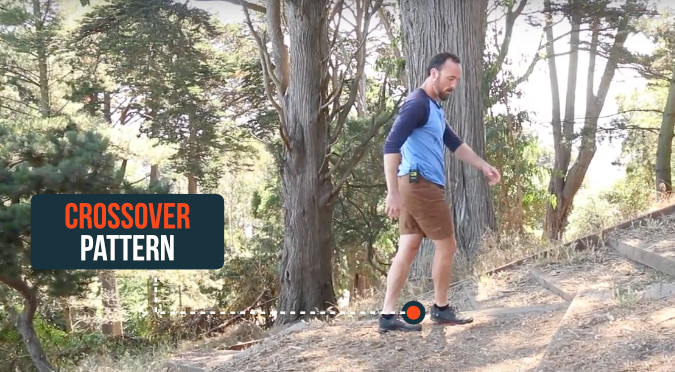
The carioca movement encourages opening of the hips for more powerful arm swing as well as quicker footwork for improved cadence control.
Quicker cadence allows you to run faster for longer.
Complete 2-3 rounds of carioca for 10-30 meters before 1-2 runs each week.
These 5K training tips will make a world of difference in your 5K race-day running. Use them to improve your ability to hold onto that speed from start to finish!
5K Running Tips from Seasoned Runned: Mike Olzinski
We were so lucky to have accomplished (read: speedy) runner and incredibly knowledgeable run coach Mike Olzinski drop-in for some guest knowledge. He’s got a wealth of knowledge, and today he’s giving us his best tips for a 5k training plan.
1. Dial-in Your 5K Running Program in Advance
Let’s start by acknowledging that if your goal is to run a faster 5k, it is not an easy jog in the park. It is an incredibly challenging distance that, for most athletes, is well above their lactate threshold.
To prepare for those efforts, you need to be able to handle the forces that will inevitably be applied to your body. If you can’t, you run a high risk of injury. And getting to the starting line injured or at limited potential is not a great way to run a fast 5k. This is where your 5k training schedule comes in.
Before you start a targeted 5k running program, give yourself two months of solid, regular training before you take on a heavy 5k program. Those two months would involve some of the pure basics.
These include: strength training 2-3 times a week, doing some light and frequent aerobic runs, having a few harder runs on varied terrains like hills or trails, and practicing some light technique work like skipping drills, high knees, or balance exercises.
It would be a mistake to come from some very minimal training or little preparation and dive right into 5k interval runs.
In fact, in those two months of preparatory training, consider choosing a practice race to gauge where you’re at physically before diving into your 5k training program.
Your 5k training schedule is crucial to your race-day success—don’t neglect it.
2. Training for a 5K With Sustainable Speed Test
Now that we’re ready to dive into true 5k training, we need to set realistic goals. There is no doubt that the 5k race will test your ability to withstand your top speeds, so it is important at the outset to understand your abilities and pinpoint areas where you can grow.
Give yourself a session or two to figure out what a realistic 5k pace is for you. Once you understand what pace you can currently handle, you can set realistic goals that then push your pace in a doable way.
My recommendation: go with some 1000m repeats. A 5k is 5 x 1000m with no recovery, so understanding your 1000m-pace at a race effort will help you manage your effort and pace in the full 5k. You can learn how you should start the race, and where you might be able to push it.
Sample Workout: 1000m Repeats
This is a great workout to do on a track or on a flat, measured-out 1km stretch of trail or hard-pack dirt.
WARM-UP:
- Go through a full warm-up that you have learned over the months and videos with T.R.E. Do some warm-up jogging, then a little dynamic mobility, then some good running drills to make sure that you are feeling nice and loose.
For an easy, follow-along warm-up, check out this video:
- Then, do 4 little prep running “pick-ups” for around 30-40 seconds. On a track this could be a nice, building 200m run.
MAIN SET:
- Run 5 x 1000m at a strong but sustainable pace. Your recovery is 2.5-3 minutes of easy, soft jogging in between reps. Try to avoid walk breaks on the recovery, but take them if needed.
Your runs should be smooth and repeatable. The effort recommended here would be about 80%, or 8 out of 10 in Perceived Effort.
You’re not necessarily going for a personal best here. You’re just trying to get a sense of what you are capable of. If you execute well on the first few reps, then you know you can push yourself a bit faster on reps #4 and #5 and drop your times a bit.
COOLDOWN:
- Be sure to do an easy 10-15 minutes just to make sure you recover nicely for the next workouts. If you can schedule this workout before one of your rest days, all the better.
3. Train for a 5K With Easy Aerobic Runs
There are many different types and styles of training programs, and there are many different types of runners. Whether you are an 80-mile/week workhorse on the run, or a busy 25-mile efficiency runner, training for a 5k requires strong aerobic abilities to be comfortable on your run.
Therefore, the easy, low-stress, aerobic run is equally important no matter what type of athlete you are.
Often, when we are trying to get faster, our brains and goals twist our training to only include the hard. We train at max effort every day because we think it is the only way to get faster. However, our bodies and systems actually need time to recover from the hard training sessions.
While it’s true that those hard runs are the ones that will really move the dial on your speed, they can only do that if you have time to recover properly.
As runners, we are lucky that we can go out and practice our sport during a light recovery session. We can go out for a light, low-stress run and it is still helping us adapt to our ultimate goal of being a stronger runner.
Don’t Push Too Hard
On average, a runner will make anywhere from 75-95 strides per minute. This means that if you go for an easy, aerobic run for 45 minutes, you could be taking up to 4,275 strides.
Your ankles, knees, muscles, hips, core, shoulders, and nervous system recognize all of those strides and that is plenty to keep the stimulus moving forwards.
The problem many athletes face is that they push too hard on every run, leaving them fatigued for future key training sessions. This accumulation of stress is bad for your race speed, and could ultimately lead to injury.
In the 5k, we don’t need these massive long aerobic runs like marathon training might require. If we get comfortable with a light, 45-60 minute run 2-3 times a week, and then include two key training sessions where we push the pace, that is plenty to allow progress in effort and speed. And this version of training allows recuperation time to keep moving forward.
In sum on this point: don’t mess with the easy, aerobic run. If you treat it well, then it will treat you well.
4. Practice the 5k Race Before the Big Day
Running a “fast” race, whatever that means for you, is an incredible athletic achievement. So it is important to make sure ahead of time that you have the capacity to achieve your desired race time. This requires intense preparation.
What’s more, you must take into account the effects of stress and adrenaline on your body. The dynamic of a big race start, the course, the weather, your pacing, your breakfast, and other factors could all affect on how you run on race day.
If you are unprepared to handle the emotions that come from those factors on race day, your race might not turn out as planned. It is possible that you will go out faster than your body can handle because of the adrenaline, which makes a 95% effort feel like an 85% effort.
This can have a negative impact on your overall time, because if you go out at a pace way too fast for your fitness, you will decline and slow down later in the race.
So despite all of your preparation, these exterior factors may cause you to miss the race time you thought you were prepared for.
How to Overcome Negative Race Day Factors
What is the answer to that? Prepare, practice, and then perform. That is the best way to show up on race day at your best. 5k races are generally pretty easy to come by in most towns, so the ideal situation is having one or two practice races before the big day.
The best practice would be to have a nice 3000m, 2-mile, or 5k race race three weeks before your target race. You don’t need to PR in this preparatory race. You can relax and practice your pacing and your morning prep routine, just so that you know what works come race day.
If you cannot find a local race to practice with, then you can do a race simulation on your own, or with some support from friends! Here is a good race simulation workout to hit.
Sample Workout: 5k Race Simulation
Pre-Workout Note: This run should ideally be done on a surface similar to your race surface. If your race is on a road, try to find a similar road with minimal traffic stops or interruptions. If it is on a track, then run it on a track. Do your best to mimic race terrain.
WARM-UP:
- Go through a full warm-up4 like the one above.
- Do 4 striding runs to open up the gait and get the nerves switching on.
- Rest for about 4-5 minutes, get a swig of water and get ready to hit it.
MAIN SET:
- Run 2 x 1 mile at progressive 5k race effort. Rest 90 seconds between.
Then…
- Run 4 x 400m at your best 5k race effort (a goal pace). Rest 60 seconds between each.
COOLDOWN:
- Be sure to do an easy 10-15 minutes just to make sure you recover nicely for the next workouts.
5k Training FAQs—Answers from the TRE Team
What’s the best prep for a 5k?
Proper training. Don’t sign-up for a 5k and run it all willy-nilly expecting great results. The best prep for a 5k is intentional training.
That involves 5k training schedules, cross-training, stretching, and nutrition. It’s a lot of work, but it’s worth it—plus, it’s fun!
Is there a faster 5k training plan?
Yes! Download The Run Experience mobile app to get on-the-go faster 5k training plans in your pocket. We have training plans for whatever your 5k running goals may be.
What’s the best way to run a 5k?
Run within your limits. You’re going to need to push your limits to achieve your next 5k PR, but the pushing doesn’t all come down to race day. No, the pushing comes to your training.
You have to push to train smarter, and you need to push to rest better and eat healthier, too. The best way to run a 5k isn’t to run harder on race day—it’s to train smarter during the prep weeks.
What’s a good 5k training plan for beginners?
Mike Olzinski’s tips above are the best 5k training plan for beginners you’ll find. Follow those tips (along with training plans on The Run Experience mobile app) to build the perfect 5k training plan for whatever running level you’re at.
Can you train for a 5k in 2 weeks?
Sure, you can train for a 5k in 2 weeks, but you’re better off extending your training cycle. 2 weeks isn’t sufficient time to build speed and endurance while prioritizing rest and recovery.
Training for a 5k isn’t a one-and-done ordeal—it’s a consistent drive to improve and enjoy the process.
Start Preparing for Your First 5K
You’ve made it to the finish line—literally and figuratively—so use that momentum to prepare for your 5k race. Five more weeks of detailed training await. Who knows—you might just decide to carry on and build up to a half marathon.
Or double down on injury prevention and strength training.
Whatever the case, click here to download the app and browse all our full training programs and our running community! They’ll teach you more tips and tricks for how to prepare for a 5K race.
